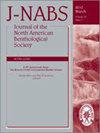The influence of extreme climatic events and human disturbance on macroinvertebrate community patterns of a Mediterranean stream over 15 y
引用次数: 51
Abstract
Abstract We analyzed long-term changes in macroinvertebrate communities in a Mediterranean temporary stream in southern Portugal over 15 y (1993–2008) at 10 locations with 3 degrees of physicochemical disturbance (reference, high disturbance, and mild disturbance). We related year-to-year variation of macroinvertebrate communities to long-term (59 y) information on precipitation and temperature. Our goals were to: 1) determine the stability of macroinvertebrate communities in the stream, 2) establish the influence of physicochemical disturbance on community stability, 3) assess the influence of climate change on the macroinvertebrate communities, and 4) assess the interactive effects of climate change and disturbance level on macroinvertebrate communities. Community structure varied naturally from year to year, but changes in taxon richness and evenness were much stronger and more unpredictable in disturbed than in other sites. In the long term, the more diverse (reference) and the poorest (disturbed) communities were stable, whereas communities affected by mild disturbance slowly decreased in taxon richness (slope = −0.07, r2 = 0.38). This decrease could be a response to the continuous stress or to climate change. The multivariate patterns over time of invertebrate communities at mildly disturbed sites were the only patterns significantly correlated with climatic patterns. In the past 59 y in this Mediterranean area (southeastern Europe), winter temperature has increased 1°C and precipitation has decreased 1.5 mm/d. Marked changes in community composition (70–80% Bray–Curtis dissimilarity) occurred only in years of extremely low precipitation or temperature. In years of climatic extremes and at chemically disturbed sites, Orthocladiinae and Simuliidae became dominant. In this stream, a shift in community equity occurs before species elimination. This shift might be useful as an early warning for biodiversity loss because of disturbance or climate change. We recommend continued sampling of reference sites for monitoring purposes so that effects of climate change can be established and so that contemporary human disturbance can be assessed relative to an adjusted reference condition.极端气候事件和人为干扰对15年来地中海河流大型无脊椎动物群落格局的影响
摘要/ Abstract摘要:我们分析了葡萄牙南部地中海临时河流中大型无脊椎动物群落在15年内(1993-2008)的长期变化,在10个地点进行了3度物理化学干扰(参考、高干扰和轻度干扰)。我们将大型无脊椎动物群落的年际变化与降水和温度的长期(59年)信息联系起来。我们的目标是:1)确定河流中大型无脊椎动物群落的稳定性;2)建立物理化学干扰对群落稳定性的影响;3)评估气候变化对大型无脊椎动物群落的影响;4)评估气候变化和干扰水平对大型无脊椎动物群落的交互效应。群落结构随年际自然变化,但受干扰的群落多样性和多样性变化明显,且难以预测。从长期来看,多样性较高(参考)和受干扰程度较低(干扰程度较低)的群落多样性较稳定,而受轻度干扰的群落分类丰富度呈缓慢下降趋势(斜率=−0.07,r2 = 0.38)。这种减少可能是对持续压力或气候变化的反应。轻度扰动地点的无脊椎动物群落的多变量模式是唯一与气候模式显著相关的模式。在过去59年中,地中海地区(东南欧)冬季气温上升了1°C,降水减少了1.5 mm/d。群落组成的显著变化(70 ~ 80%的Bray-Curtis差异)仅发生在极低降水或极低温度的年份。在气候极端的年份和化学干扰的地点,正枝科和拟枝科成为优势。在这条河流中,在物种灭绝之前,群落公平发生了转变。这一转变可能有助于为干扰或气候变化造成的生物多样性丧失提供早期预警。我们建议继续对参考地点进行抽样监测,以便确定气候变化的影响,并根据调整后的参考条件评估当代人为干扰。
本文章由计算机程序翻译,如有差异,请以英文原文为准。
求助全文
约1分钟内获得全文
求助全文

 求助内容:
求助内容: 应助结果提醒方式:
应助结果提醒方式:


